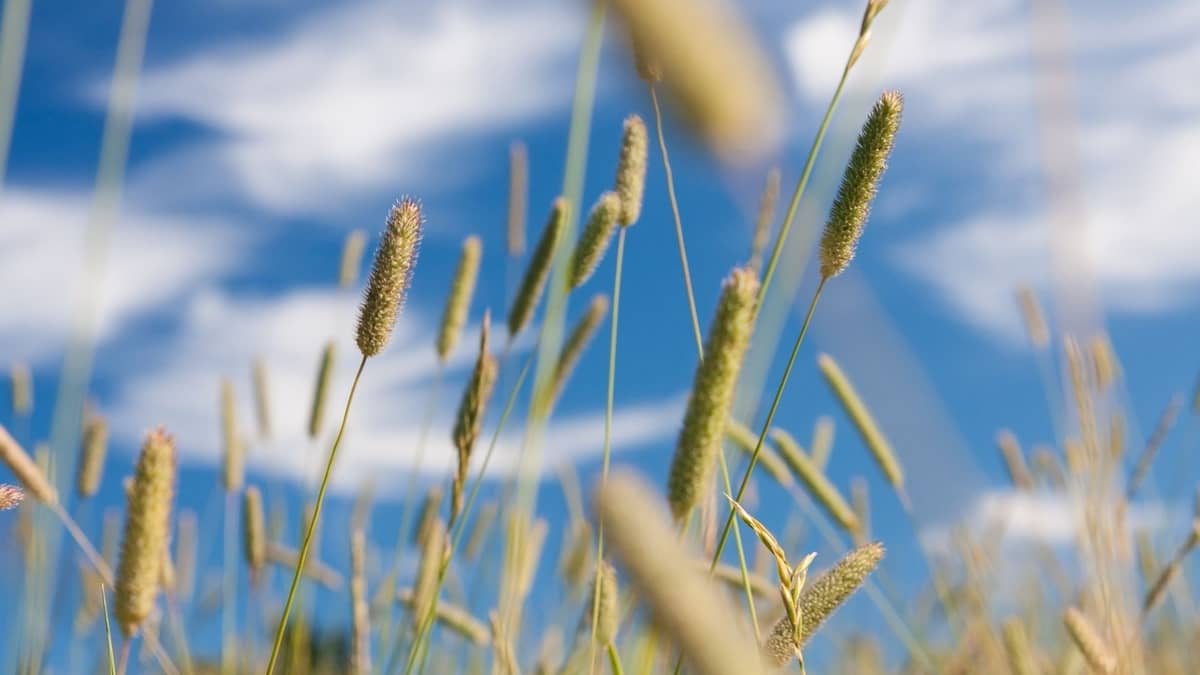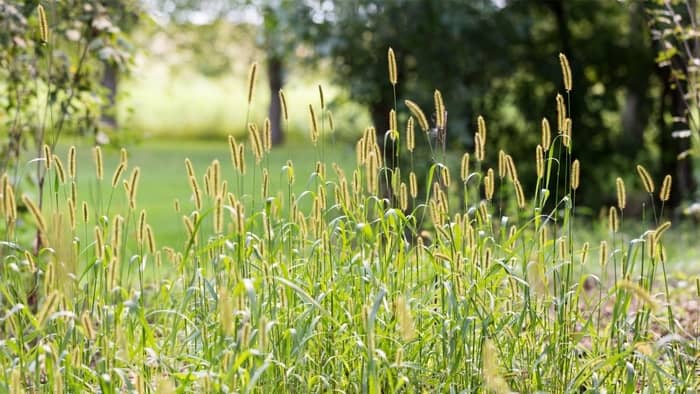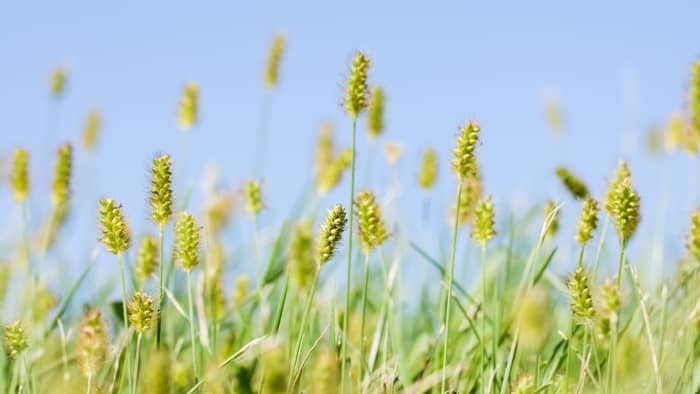Last Updated on October 19, 2022 by Griselda M.
Growing grass in pots and containers is easy but requires a few basic conditions and steps. Click to learn how to grow timothy hay indoors.
The grass is most often associated with backyards and landscaping. So it’s no wonder that this isn’t usually the first thing that comes to your mind when looking for greenery for indoor living.
However, try to imagine that you have a mini lawn in your home that can be both decorative and useful. Therefore, keep reading to learn how to grow timothy hay indoors.
Description
Timothy grass (Phleum pratense), often referred to as Timothy hay is a cool-season perennial grass that originates from temperate regions (mainland Europe, North America, and the United Kingdom). This plant comes from the Poaceae family and is named after Timothy Hanson. This American farmer promoted the use of grass outside of New England and among British farmers in the early 1700s.
It grows in erect culms 1.6 to 3.3 feet (50 cm to 1 m) tall with swollen bulblike bases. The leaves are typically rolled lengthwise and are about 17 inches (44 cm) long. They are smooth and hairless and pale green to grayish-green in color. The young ones are rolled up and become flat and pointed as mature.
Timothy hay has a shallow, fibrous root system, and its lower internodes remain short and enlarged, forming a bulb that serves as an organ for storing carbohydrate reserves. It shoots live during parts of two growing seasons. From the older ones, new shoots develop every year, which ultimately results in a perennial stand.
As for the seeds, they are very small, with about 3 million seeds per kg, and have the appearance of dense cylindrical spikes. Timothy hay grows much faster relative to other grasses. This ultimately means that rapid ripening gives an optimal quality that is narrower than for other grasses.
How To Grow Timothy Hay
Timothy Grass is usually grown outdoors when the conditions are warm enough, but as winter arrives it is the right time for indoor cultivation. When grown indoors, there is no set time for when to plant timothy grass, as is the case with outdoor cultivation when the ideal time is from March to April onwards.
As for the planting process itself, it doesn’t require much preparation. Therefore, let’s move on to the steps to successfully grow timothy hay indoors.
Material Needed:
- Timothy grass seeds
- A shallow container with drainage holes
- Soil
- Gravel or pebbles
- Misting bottle
A Guide To Growing Your Own Indoor Grass
- It would be good to opt for shallow pots that have good drainage.
- They will be ideal homes for indoor grass.
- The grass prefers moist soil but is not a fan of sitting in water.
- Excess water can prevent its growth and lead to root rot. Therefore, it is very important to choose a container that will allow easy passage of water.
- As for the container, it can be anything from a rectangular galvanized metal planter, and a plastic tube to a terracotta pot.
- The most important thing is that it is not too deep or that there are no proper drainage holes. If you don’t want to or can’t find a container with holes, gravel and pebbles can help.
- Put about ½ inches to 1 inch of gravel or small pebbles to help drain the water. Once you put it inside, cover it with a few inches of potting soil.
- Sprinkle the soil with Timothy’s grass seeds. Then simply (but gently) gently press the seeds into the dirt with your fingers.
- Water the seed until the soil is damp, using a spray bottle.
And that would be it! You are done with the planting process.
A Guide To The Best Care
Soil
Timothy is a hardy grass which means it can withstand many types of soil, from loose and sandy to rich clay.
Water
Timothy hay can withstand sudden “flooding” or short periods of drought. However, make sure that this doesn’t become practice. You should mist your seeds every other day until you notice the blades.
After that, you can start watering lightly every few days. The ideal condition is that the soil is constantly moist. Regular watering is required because the plant has shallow roots that are unable to provide water below the soil surface.
Location
Timothy grass prefers partial shade. Therefore, it would be good to place it in a place that does not have a lot of direct sunlight. Excessive sun exposure can degrade the quality of the grass and give it a sickly and pale color.
Fertilization
It would be advisable to fertilize the grass with nitrogen-rich fertilizer once in the spring and again after harvest. Fertilizing will provide it with nutrients to keep it growing and looking its best.
Trimming
Once your grass really starts to grow, you will want to trim it. However, this step is optional because it depends on your preferences. Some like natural free-form tuft and some don’t. You can trim the tops with scissors to about ½ inches above the top of the soil.
Harvesting
As for the harvest, it should be at the right time for the best quality. This would mean that the ideal harvest time comes at an early stage of flowering.
In Conclusion
Finally, it is important to reiterate that it is very possible to grow timothy hay indoors (although some will argue otherwise). Timothy Hay is easy to grow in pots, containers, or even trays. It can certainly bring some natural new green growth indoors for your pets to enjoy, especially during the winter.
Timothy grass is very easy to maintain, it only needs a proper container/pot, regular watering, and partial shade. With good care, your grass could last anywhere from several weeks to several months or even years.
Have you ever grown timothy hay indoors? Let us know in the section below.
Learn more about Beginner’s Guide On Growing Beet Greens Indoors





